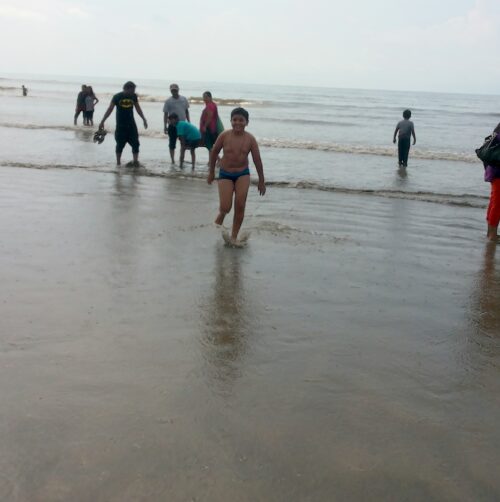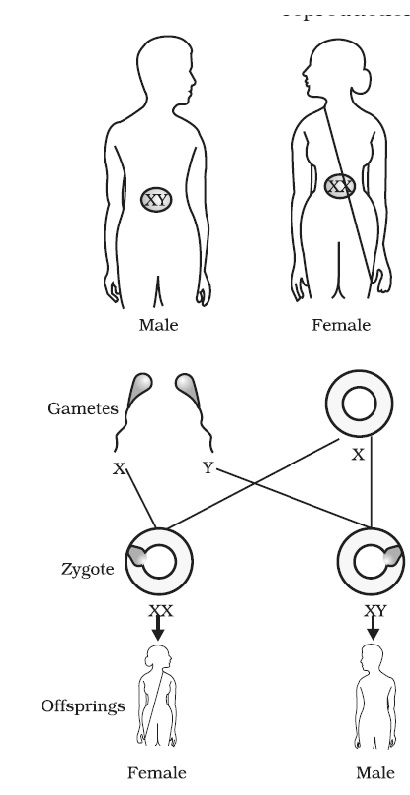Mixing of different solid, liquid or gaseous substances and microorganisms into water, so as to alter its natural qualities is called as water pollution. According to the National Water Commission (1973), water gets polluted if it has not been of sufficiently high quality to be suitable for the highest uses people wish to make of it at present or in future.
Sources or causes of water pollution
Basically, there are two types of sources of water pollution- (1) Point Sources and, (2) Non-point Sources. Sources of water pollution that discharge pollutants directly into the water source, are called as Point Sources of water pollution. Factories, power plants, underground coal mines, and oil wells that are situated close to water source are some examples of point sources of water pollution. Sources of water pollution that remain scattered and don’t have specific locations for the discharge of pollutants into particular water bodies are called as Non-point Sources of water pollution. Run- off from fields, lawns, gardens roads and streets, construction sites logging areas, bus stations and railway junctions etc. are included in the non-point sources of water pollution.
According to the nature of the origin of pollutants, the sources of water pollution can be detailed under different heads, like municipal sources, Industrial sources, Agricultural sources, Shipping sources and underground sources.
1.Municipal Sources: These sources of water pollution comprise residential colonies, mohallahs, hospitals, small industries, offices, institutions etc. The pollutants released from these sources reach to drains from where they are carried to ponds, lakes and rivers.
2.Industrial Sources: Petrochemical workshops, synthetic fertilizer industries, oil refineries, paper mills, textile industries, sugar mills, iron and steel industries, leather industries, wine industries, rubber industries, fibre industries, plastic industries, and many others are sources of water pollution. These industries produce different types of poisonous by- products that are released into streams which join rivers.
3.Agricultural Sources: Different types of agrochemicals like synthetic fertilizers, pesticides, hormones, soils of crop fields, dung of cattle, wastes of dairies etc. are remarkable agricultural sources of water pollution.
4.Shipping Sources: Ships moving in seas and oceans release lots of wastes into water. Besides human wastes, lots of oil and other products from ships contaminate marine water, day and night.
5.Sources of Underground Pollution: The underground water is polluted by mixing of wastes seeped into the earth from the heaps of wastes and industrial dumps. Different types of germs of diseases that are produced in the accumulated wastes on ground, also seep into the earth and contaminate the ground water.
Major Water Pollutants
There are different types of pollutants that mix into water and make it unfit for use by humans, animals, and even by plants. These pollutants can be kept under different groups like sewerage, infectious microorganisms, plant nutrients, organic chemicals, inorganic chemicals, and sediments etc. Water of different water sources like ponds, pools, rivers, lakes, and streams, are getting seriously polluted due to mixing of these pollutants. Most of our major rivers like Ganges, Yamuna, Damodar, Mahanadi etc. have become seriously polluted due to heavy industrialization along their banks, mining activities, agricultural run offs and other human activities.
Various types of toxic substances get seeped into the earth from soak pits, garbage dumps, sewage tanks, transport accidents, dumps of agricultural wastes, dumps of chemical industries etc. These toxic chemicals reach to the underground water table and contaminate the underground water. This condition is called as ground water pollution.
1.Sewage: Some materials get mixed into water where microorganisms start their degradation to produce carbon dioxide, methane and other gases. The oxygen found dissolved in water is consumed in this process of degradation. Due to this an artificial crisis of oxygen into water is created which kills many aquatic organisms.
The oxygen needed for complete degradation of sewage found in the polluted water is called as Biological Oxygen Demand. Testing of BOD is a 5- day long laboratory process. BOD is measured in mg / L.
Lack of oxygen in water suffocates aquatic life forms. The toxins present in algae grown due to sewage mixing into water kill many living things in it.
2.Infectious Microorganisms: The effluent released from leather industries, slaughter houses and toilets contain numerous types of bacteria and microorganisms. Dumps of wastes near water bodies produce vast varieties of germs that go into the water during rains through the surface runoffs. These germs may be the germs of cholera, typhoid, diarrhoea, dysentery and skin diseases.
3. Plant Nutrients: Plant nutrients like nitrogen and phosphorous reach to water bodies and stimulate the growth of aquatic plants like Eichhornia, Lemna, Spirogyra and other forms of algae in them. Thus, the water gets enriched by nutrients causing eutrophication. It is the eutrophication which gradually converts lakes and ponds into marshes and swamps.
4. Exotic Organic Chemicals: Surfactants and detergents, pesticides etc., are called as exotic organic chemicals. Many of these substances are non- biodegradable.
5. Inorganic chemicals and inorganic compounds: These pollutants enter into water from municipal and industrial wastes and urban runoffs.
6. Sediments: Considerable amounts of soil and silt are washed away from logged hillsides, ploughed fields and construction sites. These fine particles carried away by water are called as sediments. The sediments that join streams reach to rivers and estuaries where they cover gravel beds and deprive fishes like Trout and Salmon against spawning. Sediments block gills of fishes also.
Consequences of Water Pollution
Since the Polluted Water contains various types of chemical pollutants including hazardous substances, microorganisms of diseases etc., the utilization of polluted water is always hazardous to the health of plants, animals and human beings. Some of the seriously dangerous diseases spread every year on the community level. The nutrient enrichment of water of ponds, lakes and even oceans due to mixing of organic wastes through different sources, causes Eutrophication which leads to the deaths of aquatic animals including marine animals. Pesticides and other agro chemicals from agricultural fields join water bodies and intoxicate their water. The consumption of contaminated sea food kills a number of human beings and animals every year. The bio magnification of industrial wastes like mercury etc. in the bodies of fishes and other aquatic animals causes deadly diseases and Mina Mata has been one of these.
Prevention and Control of Water Pollution
The pollution of water can be prevented and controlled by some of the following activities-
(i) Construction of closed drainage systems in the areas of human settlements and regular cleaning of those drainage systems.
(ii) Treatment of waste water from municipal and industrial areas before its release into rivers and other water bodies.
(iii) Reduction of inputs of waste substances.
(iv) Establishing the industrial units away from cities and human settlements.
(v) Regular monitoring of pollution caused by industrial units.
(vi)Prevention of the abuse of water sources by animal bathing or by dumping wastes near water bodies.
(vii) Making compulsory the installation of pollution control devices by industries at the project formulation stage and proper verification in the later stages by enforcement agencies.




